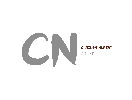I have started using the print room as a means of making art that doesn’t involve the workshop. I find it really relaxing working there, and the images that I have been using are old ones from my Foundation year. It’s strange but whenever I told someone I was in foundation art they always said it was the best year. It didn’t feel like it at the time. Going into formal education after such a long time away was a struggle, and the standards they held us to were very exacting. I had started it out of curiosity really but found myself hooked on the creativity. We had some amazing tutors/artists working with us. I particularly liked working with Robert Cooper, https://www.robertcooper.net who taught me so much about ceramics and wasn’t afraid to encourage us to be crazy in what we made and put in the kiln.
I didn’t enjoy print though. I didn’t enjoy the solvents, as they don’t agree with me. I also found it hard to work in the negative, my brain just couldn’t handle it. However, at UEL we don’t use solvents. Just cooking oil to clean up. This makes it much more user, and ecologically friendly. I have also been using photo imaging to make the prints, so don’t have to worry about the negative image. This week I am using the photo of a ceramic piece I made for my Diploma exhibition. It should work well, because it is black and white. So today is about preparing the photolithography print ready for printing next week.
In the photos here you can see my preparation. I take photos all the time to remind me of the processes I go through otherwise I would forget.
So here you can see the original image, then putting it through photoshop to increase definition. I use curves to achieve this. Then I have to change the pixels to around 220. This allows the holes in the plate to be large enough for the acid to work on and later for the ink to stick. Then the image is transferred to the prepared litho plate in the lightbox. The back of eh plate is covered in shellac to protect it from acid. Then it goes into a$-10% acid bath to etch the plate. This time I also applied aquatint to achieve a dark black background, the handy scale is stuck on the wall to give you an idea of the time to allow in the box to achieve the right shade of grey-black
.










